Dragon Warrior
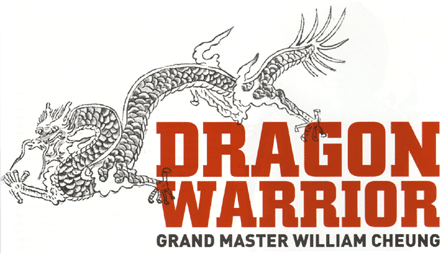
This is a story like any great action movie. Full of drama, pain and survival, gangsters and street fighters, and at the centre of the story is the hero. Some of the parts that make up this story would seem too good to be true but that’s what makes the tale of Grand Master William Cheung so intriguing. Now in his sixties there are hundreds of tales surrounding the life of William Cheung. In creating this article it was painful deciding which parts to include and which to omit but hopefully what follows is as entertaining to read as it is to hear firsthand.
I met William Cheung for the first time inside his Chinatown training gym, tucked away at the end of an alleyway and up a flight of stairs. Dozens of framed magazine covers featuring William Cheung in various Wing Chun stances adorn the walls of the stairwell as I make my way into the gym where I am greeted by an enthusiastic William Cheung. Although in his mid-sixties, William appears to be very fit and strides with confidence as he leads me into his upstairs training room where we sit down in front of a row of trophies from various martial arts tournaments. William is friendly and more than keen to share his story.
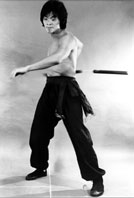 Beginning with his early childhood, William explains the path that led him into the martial arts world. “My father had two wives, which was very common in those days and I was the son of the second wife. My eldest brother was from the first wife and his name is actually King Kong (that is his real name). He is about five and a half years older than me and was bullying me and beating me up every day. I always wanted to do martial arts so that I could defend myself against my own brother”. After witnessing an elderly Wing Chun master named Yip Man knock a young boxer to the ground three times in a challenge match, William Cheung was amazed and soon after obtained permission to learn Wing Chun from Yip Man. “From there I trained three and a half years and decided that Wing Chun was what I wanted to do with my life so I ran away from home. Hong Kong is a small place and I was still near to home, they knew where I was, so I went to live with Yip Man at the end of 1954”.
Beginning with his early childhood, William explains the path that led him into the martial arts world. “My father had two wives, which was very common in those days and I was the son of the second wife. My eldest brother was from the first wife and his name is actually King Kong (that is his real name). He is about five and a half years older than me and was bullying me and beating me up every day. I always wanted to do martial arts so that I could defend myself against my own brother”. After witnessing an elderly Wing Chun master named Yip Man knock a young boxer to the ground three times in a challenge match, William Cheung was amazed and soon after obtained permission to learn Wing Chun from Yip Man. “From there I trained three and a half years and decided that Wing Chun was what I wanted to do with my life so I ran away from home. Hong Kong is a small place and I was still near to home, they knew where I was, so I went to live with Yip Man at the end of 1954”.While many martial artists today claim to have had some kind of connection to possibly the world’s most well known martial artist ‘Bruce Lee’, in William Cheung’s case it is undisputable. William’s first book includes letters between himself and his old friend and some of their adventures together are the stuff of martial arts legend. “I actually introduced Bruce to Wing Chun. Outside of Kung Fu I was like his minder. We met on his ninth birthday. In Hong Kong during the 40’s and 50’s the racial discrimination was very bad on either side. The Chinese wouldn’t accept anyone with foreign blood and because Bruce Lee was one quarter white he didn’t fit in anywhere. He was not accepted by the Chinese and was also not accepted by the Caucasians so he had a lot of problems. I used to pick him up after he finished school and made sure he was alright. We became very good friends. In 1954 he decided that he wanted to start training Wing Chun. In the old days the Master would very seldom teach. The seniors would teach the juniors, so Bruce was training with me most of the time. After we left Hong Kong we kept in touch”.
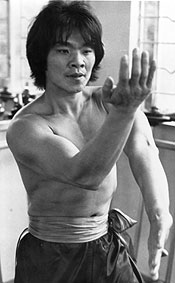 As William increased quickly in skill he was keen to test his abilities as a fighter. His thirst for action led him into the world of illegal challenge matches, often taking place on the rooftops of buildings. “At that time there was nothing malicious. There was one guy who we happened to have a challenge match with. His name was Wong Kiew and he practised a Southern Praying Mantis style of kung fu. I defeated him and in the beginning I think he wanted revenge so he kept finding people to beat us. By us I mean Ah-Leung and me, and Bruce Lee in the later days. Sometimes he would organise three fights in a day… I remember my first challenge match. It was on the roof and I was to fight a Choy Lay Fut Master. He was probably five years older than I was, and I was about 16 years old. They spin around and move very fast so it is very hard to catch them and hit them hard so I was chasing him around the whole roof. The rooftops were very big, sometimes a whole block in size. There was a railing around the roof and he jumped up onto this three-foot high railing while I was chasing him. He lost his balance and I had to catch him to prevent him falling six stories. So they called a time out on the fight. When it resumed he continued to spin around and move everywhere but I had figured out how to restrict him. I caught his elbow while he was spinning and I hit him on the coccyx so he gave up. A few months later we had become very good friends and he told me that after our fight on the rooftop he couldn’t go to the toilet for a whole week because he couldn’t squat down!”
As William increased quickly in skill he was keen to test his abilities as a fighter. His thirst for action led him into the world of illegal challenge matches, often taking place on the rooftops of buildings. “At that time there was nothing malicious. There was one guy who we happened to have a challenge match with. His name was Wong Kiew and he practised a Southern Praying Mantis style of kung fu. I defeated him and in the beginning I think he wanted revenge so he kept finding people to beat us. By us I mean Ah-Leung and me, and Bruce Lee in the later days. Sometimes he would organise three fights in a day… I remember my first challenge match. It was on the roof and I was to fight a Choy Lay Fut Master. He was probably five years older than I was, and I was about 16 years old. They spin around and move very fast so it is very hard to catch them and hit them hard so I was chasing him around the whole roof. The rooftops were very big, sometimes a whole block in size. There was a railing around the roof and he jumped up onto this three-foot high railing while I was chasing him. He lost his balance and I had to catch him to prevent him falling six stories. So they called a time out on the fight. When it resumed he continued to spin around and move everywhere but I had figured out how to restrict him. I caught his elbow while he was spinning and I hit him on the coccyx so he gave up. A few months later we had become very good friends and he told me that after our fight on the rooftop he couldn’t go to the toilet for a whole week because he couldn’t squat down!”Eventually William’s reputation as a top fighter, known in the fight scene by his nickname Ah-Hing, led to big problems for himself and his friends. “Hong Kong, like anywhere, has small gangs and big gangs. Most of the recruits into the gangs come from the martial arts schools. Most of the masters are looked up to by the gangsters. We were young kids who wanted to test our skill in Wing Chun. We were defeating all of the famous masters which caused them to lose face. One thing led to another and they decided that they had to shut us down… We were set-up, ambushed by a gang and one of our group was killed during the fight. The triads are protected by the police and the police are protected by the politicians. I was basically given an ultimatum and had to leave Hong Kong.”
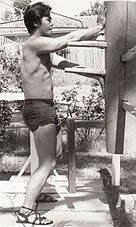 The triads told me that I had to leave Hong Kong before 1959 and they would call it quits. I left on Christmas eve on a boat to Australia. I’d been on the boat for three days and everything seemed to be going fine when one of the seamen came to me and told me to watch my back. I asked him what he meant and he told me that he’d heard that the triads had put a contract on my life and there were four assassins on the boat. I thought ‘well if they’ve come to get me I might as well go and find them first’. I planned to catch them one by one. So I went to look for them but things did not turn out as I had planned. I went down to the lower level of the boat and found one of them asleep. I woke him up with a heavy punch on his thigh. I said ‘You looking for me?’ he said ‘Oh no it wasn’t me, it’s another guy!’ So I told him to go and find the other guy. But that was a mistake because he came back with more than twenty people and they locked the cockpit on the third deck. The area was a dining platform so all the chairs and tables were occupying a lot of the floor space. I knew that they couldn’t all attack me at once because of the floor space. I knocked a couple of them out and then more would chase after me and I’d have to keep turning around and fight. Wing Chun is very good for using in a confined space so I was gaining an advantage… The Captain and First Officer came down with guns and blew open the cockpit. When they came down there were people all over the floor, bodies everywhere and I was standing in the middle. They separated everyone and in the confusion I got out of there and went back up to my room because I was exhausted as the fight had lasted for ten minutes. I lay down and felt a sharp pain in my back. There was a knife stuck in my back. I then checked myself and found that I had five wounds from different knife cuts on different parts of my body. I also had a wound from an axe where I’d seen a guy coming at me with the axe so I kicked his wrist and he let go of the axe cutting into the top of my knee. That was a big fight and ten people were sent to the sick bay. Well, I was the eleventh. Before I reached Sydney the news of the fight had already spread and the newspaper in Hong Kong had reported on it and newspapers in Sydney had also published the story.”
The triads told me that I had to leave Hong Kong before 1959 and they would call it quits. I left on Christmas eve on a boat to Australia. I’d been on the boat for three days and everything seemed to be going fine when one of the seamen came to me and told me to watch my back. I asked him what he meant and he told me that he’d heard that the triads had put a contract on my life and there were four assassins on the boat. I thought ‘well if they’ve come to get me I might as well go and find them first’. I planned to catch them one by one. So I went to look for them but things did not turn out as I had planned. I went down to the lower level of the boat and found one of them asleep. I woke him up with a heavy punch on his thigh. I said ‘You looking for me?’ he said ‘Oh no it wasn’t me, it’s another guy!’ So I told him to go and find the other guy. But that was a mistake because he came back with more than twenty people and they locked the cockpit on the third deck. The area was a dining platform so all the chairs and tables were occupying a lot of the floor space. I knew that they couldn’t all attack me at once because of the floor space. I knocked a couple of them out and then more would chase after me and I’d have to keep turning around and fight. Wing Chun is very good for using in a confined space so I was gaining an advantage… The Captain and First Officer came down with guns and blew open the cockpit. When they came down there were people all over the floor, bodies everywhere and I was standing in the middle. They separated everyone and in the confusion I got out of there and went back up to my room because I was exhausted as the fight had lasted for ten minutes. I lay down and felt a sharp pain in my back. There was a knife stuck in my back. I then checked myself and found that I had five wounds from different knife cuts on different parts of my body. I also had a wound from an axe where I’d seen a guy coming at me with the axe so I kicked his wrist and he let go of the axe cutting into the top of my knee. That was a big fight and ten people were sent to the sick bay. Well, I was the eleventh. Before I reached Sydney the news of the fight had already spread and the newspaper in Hong Kong had reported on it and newspapers in Sydney had also published the story.”William spent the remainder of the trip under armed guard 24 hours a day to protect him from the gangsters. “Before Sydney we were due to dock in Cairns and just before we arrived in Cairns the head of the gang must have bribed the First Officer because he came into my cabin as I was coming out from the bathroom. I saw them standing there and knew that they were going to do something. The gang leader, named Wong Fuk, who was a fat guy, told me that if I was going to sue them he would get rid of me. We were separated by a table so I told him ‘let’s sit down and talk but talk softly so that nobody outside will hear us’. I got him to lean over to talk to me and when he leant over I grabbed his throat. I said ‘I can kill you right now, so tell your bodyguard to leave the room and I’ll let you live!’ He couldn’t talk because I was gripping his throat so hard so he signalled for his bodyguard to leave the room. When we were alone I let go of his throat and he asked me ‘do you have a towel?’ I said ‘What? What do you need a towel for?’ He’d wet himself ha ha! That was the big gangster!”
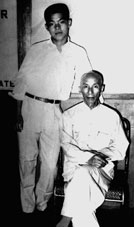 William Cheung somehow managed to make it to Australian shores in one piece where he studied in Sydney for a couple of years before moving to Canberra. William tells me that Australia was not an easy place for a Chinese person in the early sixties where they could not be recognised as citizens under the White Australia Policy. While he tried to keep a low profile, every now and then William found himself in his fighting stance outside of the training arena. “In Australia in the old days, we’re talking about before 1975, nobody kicked in fights. As long as I didn’t kick and I fought clean they would fight one on one. In Canberra I had a group of young people who trained with me and the bikies did something very bad to them… I was furious because they had done horrible things to these young people so I ran into their headquarters expecting maybe seven or eight people to be there. They were actually having a meeting and maybe forty-five or fifty people were there when I ran in. So I ran in there and I couldn’t just run out again so I jumped onto a table and I challenged their best fighters, one on one. I fought five of them one on one and I actually got cut too, because they were seasoned fighters, but I survived. I spoke to them afterwards and they told me ‘well this is how we operate…’ What could I do? That night I heard a big knocking on my apartment door and they were all on the steps wanting to learn kung fu, ha ha.”
William Cheung somehow managed to make it to Australian shores in one piece where he studied in Sydney for a couple of years before moving to Canberra. William tells me that Australia was not an easy place for a Chinese person in the early sixties where they could not be recognised as citizens under the White Australia Policy. While he tried to keep a low profile, every now and then William found himself in his fighting stance outside of the training arena. “In Australia in the old days, we’re talking about before 1975, nobody kicked in fights. As long as I didn’t kick and I fought clean they would fight one on one. In Canberra I had a group of young people who trained with me and the bikies did something very bad to them… I was furious because they had done horrible things to these young people so I ran into their headquarters expecting maybe seven or eight people to be there. They were actually having a meeting and maybe forty-five or fifty people were there when I ran in. So I ran in there and I couldn’t just run out again so I jumped onto a table and I challenged their best fighters, one on one. I fought five of them one on one and I actually got cut too, because they were seasoned fighters, but I survived. I spoke to them afterwards and they told me ‘well this is how we operate…’ What could I do? That night I heard a big knocking on my apartment door and they were all on the steps wanting to learn kung fu, ha ha.”For more than thirty years Grand Master William Cheung has been teaching Wing Chun in Melbourne. Now an established figure in the Melbourne martial arts world, his initial arrival was anything but low key. “Word got out that this crazy Chinese guy was going around challenging everybody. We never actually challenged anybody, we just went into the schools and said ‘You don’t know us but we’re going to teach Wing Chun down the road and I just wanted to let you know’ but they often took it the wrong way and a few times we had to physically shut their objections.
As I reached the end of my list of questions for Grand Master William Cheung it kinda felt like reaching the end of a movie when the lights start to come on. So I was excited to learn that the period of William’s life where he fought side by side with Bruce Lee is being made into a feature film. “The script is written by a very prominent screenwriter. He came over from LA for three weeks and he interviewed me for about thirty hours. It is a very good story because it’s not just a martial arts story. It’s a story about struggle, about how to deal with life and how to forgive and so on. I will soon be going to LA to talk to the director. Our production company ‘Blue Star’ is working with Lion Rock which is John Woo and Terrance Chan for this movie. I will be involved in the consulting and development to make sure everything is authentic. It is very exciting.”
There are several books written by William Cheung including his latest ‘City of Dragons: Ah Hing – The Dragon Warrior’ available now through this website.
Article by Andrew Montell
(Extracted from ACCLAIM Street Lifestyle magazine March-May 2006)
(Extracted from ACCLAIM Street Lifestyle magazine March-May 2006)